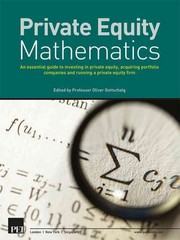Question
Q10. Which are the two important competitive strategies advocated by Micheal Porter? a. Low cost leadership, barrier to entry. b. New entrant deterrent, differentiation. c.
Q10. Which are the two important competitive strategies advocated by Micheal Porter?
a. Low cost leadership, barrier to entry.
b. New entrant deterrent, differentiation.
c. Low cost leadership, differentiation.
d. Differentiation, monopolistic.
e. Monopolistic simulation, differentiation.
Q11. Which of the following is NOT considered a relative valuation technique?
a. Price-earnings ratio.
b. Price/cash flow ratio.
c. Price/book value ratio.
d. Price/sales ratio.
e. Price/cost of goods sold ratio.
Q12. Based on Stock Amin's beta of 0.9, the normal return is 9%. However, the actual return for Stock Amin was 10%. What is Stock Amin's abnormal rate of return?
a. 1.0%
b. 0.1%
c. 0.1%
d. 1.0%
e. 1.1%
Q13.
An examination of the relationship between stock prices and the economy has shown that the relationship is
a. weak, and that stock prices turn after the economy does.
b. weak, and that stock prices turn before the economy does.
c. strong, and that stock prices turn after the economy does.
d. strong, and that stock prices turn before the economy does.
e. Nonexistent.
Q14. If two well-known technical analysts seldom agree on the interpretation of a certain technical pattern, this implies:
a. collusion between the two analysts.
b. technical rules are too complex.
c. technical rules are highly subjective.
d. not enough information has been gathered.
e. all of the above.
Q15. What is the dividend payout ratio if the price per share is RM50, earning per share is RM20, and dividend per share is RM4.5?
a. 9 percent
b. 40 percent
c. 22.5 percent
d. 25 percent
e. none of the above
Q16. Other things equal,
a. the higher the expected growth rate, the lower the P/E ratio.
b. if the risk-free rate rises, the required rate will decline.
c. as the required rate rises, the P/E ratio declines.
d. if the risk premium rises, the required rate will fall.
e. none of the above.
Q17. Which of the following is NOT considered a basic economic force?
a. Fiscal policy.
b. Monetary policy.
c. Inflation.
d. Price Earnings Ratio (P/E) ratio.
e. None of the above (that is, all are basic economic forces).
Q18. Which of the following behaviours is consistent with escalation bias?
a. Buying more of a stock as it increases in value.
b. Buying more of a stock as it decreases in value.
c. Selling a stock as it decreases in value.
d. Selling a stock as it increases in value.
e. Buying or selling a stock as it increases in value.
Q19. Which of the following would be inconsistent with an efficient market?
a. Information arrives randomly and independently.
b. Stock prices adjust rapidly to new information.
c. Price changes are biased.
d. Price changes are random.
e. Price adjustments are independent.
Q20. According to the dividend growth model, if a company were to declare that it would never pay dividends, its value would be
a. based on earnings.
b. based on expectations.
c. higher than similar firms because it could reinvest a greater amount in new projects.
d. zero.
e. based on the capital asset pricing model.
Step by Step Solution
There are 3 Steps involved in it
Step: 1

Get Instant Access to Expert-Tailored Solutions
See step-by-step solutions with expert insights and AI powered tools for academic success
Step: 2

Step: 3

Ace Your Homework with AI
Get the answers you need in no time with our AI-driven, step-by-step assistance
Get Started


